The technical serviceability of a car is a guarantee of its trouble-free operation and the safety of the owner. All components of the machine need periodic preventive maintenance, and brakes are no exception. Experiencing increased stress from an aggressive environment and temperature changes, they wear out and begin to work less efficiently. Therefore, before car owners whose vehicles have disc brakes, the question periodically arises as to which brake discs are better to buy.
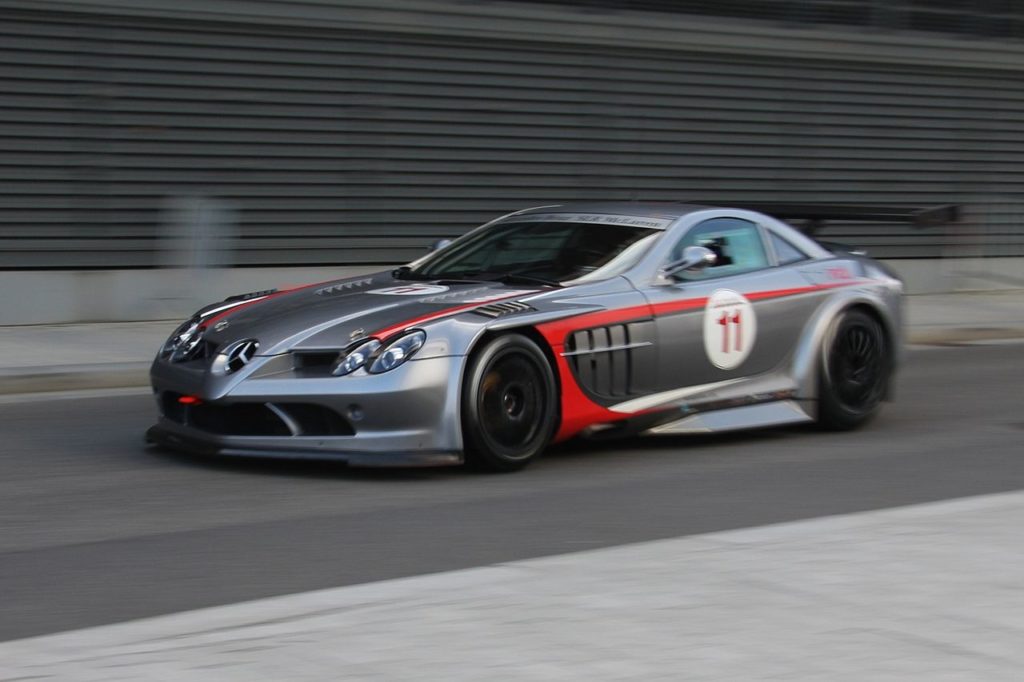
The following signs will help you understand that the brakes need service:
- Increased brake pedal travel;
- When braking, an unpleasant sound, grinding, squealing is heard;
- When turning the steering wheel, a slight beat is felt;
- Increased consumption of brake fluid (wear of brake components leads to increased heating, grinding of the inner surface of the drum forces the cylinder to push the pistons further, which can lead to a violation of its tightness and fluid leakage);
- Increased stopping distance;
- Instrument panel display (if equipped).
The appearance of any of the above signs is a reason to check the technical condition of the system and think about replacing spare parts. Depending on the design of the brakes, you can sometimes see wear without dismantling the wheels, but it all depends on the features of a particular model.
Content
What are the brakes
Drum
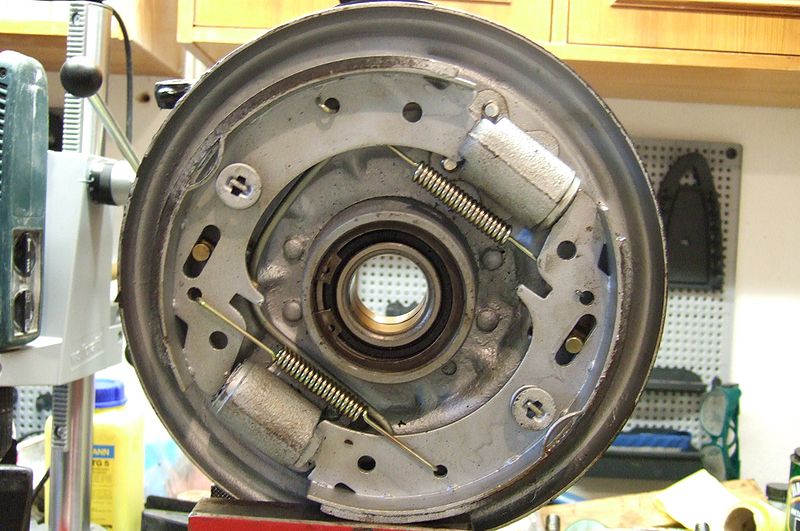
The very first design used for over a hundred years. Of course, over the years of the development of the automotive industry, many changes have been made to it, but the principle itself remains the same.
The drum mechanism is fixed to the wheel hub. From above, it is closed with a protective casing or brake drum, which protects the units from dirt and small particles. Inside there are a brake cylinder, an expanding bar that drives the pads, and the pads themselves on the springs. Pressing the pedal creates pressure in the system. Under its action, the pistons are extended from the cylinder, which press on the pads. Those, in turn, are pressed against the inner surface of the brake drum, slowing down its rotation to a complete stop.
This type of brake is cheaper to manufacture than disc brakes.
They are less susceptible to the influence of an aggressive environment, dirt, salt mixture, small stones due to the fact that the mechanism is closed.
For this reason, only this type of brake is used today on construction and military equipment. This is not to say that they are completely sealed, but they can withstand harsh operating conditions much better.
The disadvantage of the drum mechanism is the tendency to overheat due to the fact that the mechanism is poorly ventilated. Another disadvantage is the uneven wear of the brake pads, the front pad in the mechanism wears out faster, and they change in the assembly.
There is one more unpleasant moment - pads freezing to the drum. This happens infrequently, and mainly when the quality of the material of the friction linings is low, but it causes discomfort.
Disk
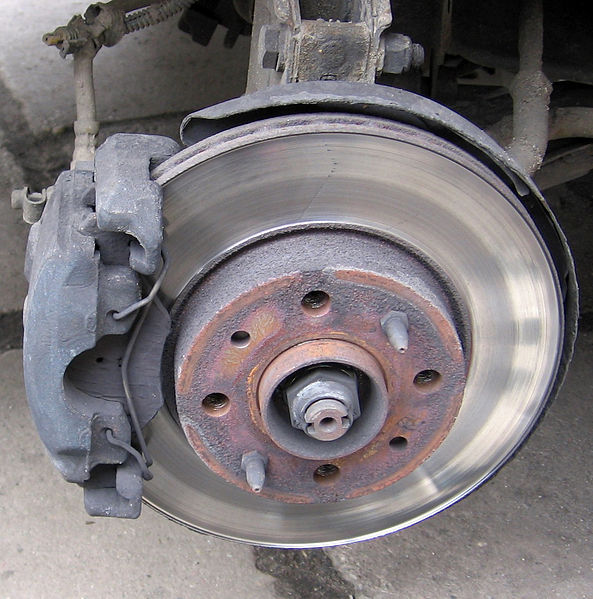
A type that replaced the previous generation of braking systems. They are distinguished by higher efficiency and reliability of work.
Disc brakes device
- Disk.It is made of metal, most often cast iron. Bolted to the wheel hub.
- Caliper. Cast iron or aluminum body in two parts. One is fixed motionless, the second has free movement. They are interconnected by guide bushings.
- Cylinders. They consist of a body, inside which the piston moves. When pressure is applied to the cylinder, the piston moves, acting on the brake pad.
- Pads. Metal plate with friction linings. There are a pair of pads in the mechanism. One is attached to the fixed part of the support - the second, opposite it, on the moving part. When you press the brake pedal, pressure is created in the cylinder, and the piston presses the pads against the brake disc, slowing down its rotation until it stops completely.
The main parts subject to wear and tear and needing periodic replacement are pads and brake discs.
Pads wear out faster, are cheaper, and are relatively easy to replace.
On average, the resource of the pads is from 25 to 50 thousand kilometers. This spread in numbers is due to many reasons - operating conditions, driving style, product quality.
Discs have a longer service life. The manufacturer, as a rule, does not explicitly indicate the service life, since it also depends on many factors that cannot be identified in advance. On average, according to the experience of motorists and service technicians, this figure is 150 thousand kilometers or more.
The signs of wear are the same with drum brakes:
- Beat in the steering wheel;
- Increased stopping distance;
- Increase in brake fluid consumption (If the surface is worn out, the cylinder has to extend the pistons further, which can lead to a leakage of the mechanism, and fluid leakage).
Signs of wear can be identified visually by measuring the thickness indicated by the manufacturer. If it is less than the recommended one, this is an absolute sign that it's time to take care of buying new ones.
Also, an indication for replacement is the deformation of the surface of the product, the appearance of chips or cracks along its edges. You can grind problem areas on the machine, but it is better to make such a decision in conjunction with a car service master, and the repair will not always be effective.
It is much more difficult to replace the brake disc, this will require a visit to the service, so the choice of this spare part must be approached with all responsibility.
What are the brake discs
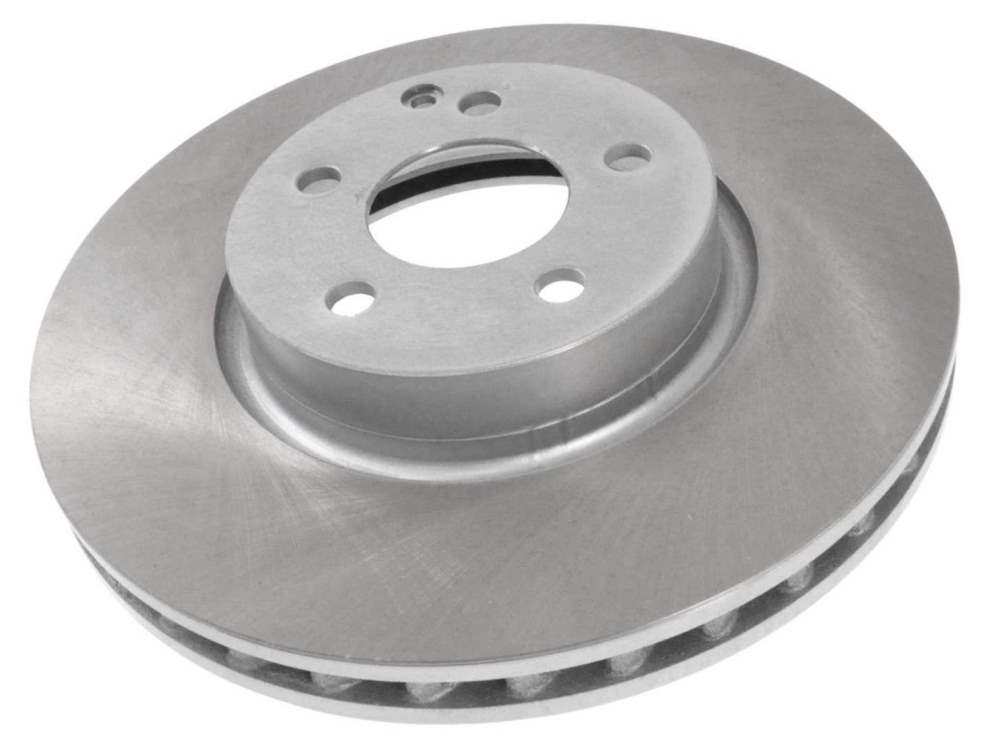
Solid cast
They are cast from cast iron, the working surface is processed on a milling mill.
There are non-ventilated and ventilated ones. In the first case, they are a single circle. It is clamped on both sides by pads. These are the most budgetary and affordable models.
The ventilated one consists of two pancakes, which are interconnected by bulkheads. When rotating, air trapped between them reduces surface heating.
Perforated

With holes all over the surface. High-strength cast iron grades are used for manufacturing. Perforation is designed to dissipate excess heat. As the part rotates, air flows through the holes, reducing the temperature.
Another purpose of the holes is to remove gases arising from the friction of the pads. The material from which the friction plates are made partially evaporates when heated, creating a layer between the surface of the disc and the pad, which prevents effective braking.
In practice, it has been proven that perforated products are inferior in efficiency to ventilated ones. First, due to the many holes, the contact area and heat dissipation are reduced.
Second, friction causes the disc surface to heat up unevenly. In the holes, the material heats up less than a smooth surface. The temperature difference leads to stress in the material. Ultimately, this can be fraught with a change in the geometry of the part or the occurrence of cracks.
Such a design is suitable for operation in urban conditions, with a calm pace of driving without harsh and extreme braking.
Notched
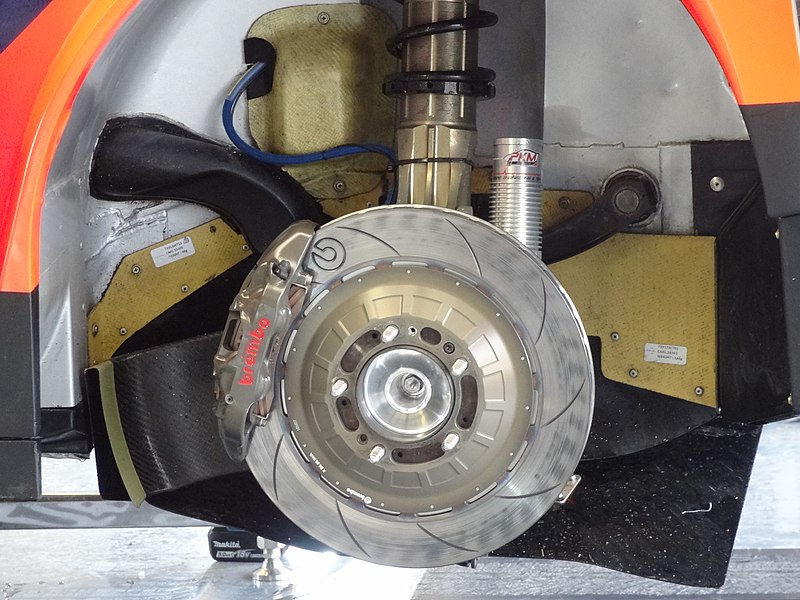
Depressions are made on the surface of the disc at regular intervals.The purpose is similar to the holes in the rotor - heat dissipation. The notches also have another plus, with each revolution of the disc they clean the surface of the rotor.
Which drive to choose
Conventionally, all brake discs can be divided into three categories by price:
Economy. These are usually unventilated one-piece models. Optimal for leisurely driving in the city from outside, without a sharp set of speed and frequent extreme braking.
Medium price segment. Ventilated products, perforated parts. They will allow you to brake more efficiently and reliably even in difficult weather conditions.
Premium segment. Expensive ventilated parts with holes, notches, their combined options. Suitable for aggressive driving at high speeds.
We should also mention the composite models made of ceramic and carbon. These models exhibit excellent heat resistance and high braking performance. Used in motorsport. Due to their high cost, they can be classified as expensive exotic.
What to look for when choosing brake discs
When the type is selected, it remains to clarify a number of nuances. Diameter and thickness. Matching bore holes on the disc and hub.
The most common mistakes when buying brake discs:
- Driving style mismatch of the purchased model.
- Buying an expensive disc with cheap pads. If the rotor material is hard, poor quality, or pads with different friction material characteristics will quickly wear out. It is recommended to select both parts of the same price category, and better from one manufacturer. This will ensure better compatibility, and the assembled mechanism will last longer.
Best brake disc manufacturers for 2020
Otto Zimmermann
The seventh place is occupied by a manufacturer of spare parts from Germany. The company has existed since the middle of the last century and during this time has gained a reputation as a reliable and quality partner. The assortment of Otto Zimmermann includes brake pads and drums, brake discs, assembly mechanisms. Spare parts are designed for cars, trucks and commercial vehicles.
On the market there are models from budget to sports, as well as composite discs, which are a hybrid of perforated and ventilated.
Advantages:
- A wide range of products.
Disadvantages:
- Multiple customer complaints about the quality of perforated parts;
- Poor compatibility with components from other manufacturers;
- The surface is poorly protected against corrosion.
DBA
Sixth - the Australian company DBA. The ventilated parts manufactured by the company have a patented cooling system "Kangaroo Paw", which is not used by any other manufacturer.
Its essence is that the jumpers connecting the halves of the rotors are arranged in a special order. When the disc rotates, air currents are created around each of the bridges due to centrifugal force, which more efficiently removes heat from the center of the disc. In general, the use of this technology reduces heating and increases the life of the product.
DBA manufactures a wide range of discs from standard to sporty models with holes and notches.
A large selection and flexible pricing policy is appreciated by buyers from all over the world.
Advantages:
- Wide range of products;
- Effective cooling.
Disadvantages:
- Poor compatibility with pads from other manufacturers;
- They need professional installation and setup.
EBC
The fifth line of the review was taken by a British brand. The company specializes in the development of disc and disc brake assemblies. The range is aimed at active driving enthusiasts and includes ventilated discs and notched models.
There are three lines in total: for fast driving, for sports cars, and for cars of the middle and executive class.
Advantages:
- Excellent value for money.
Disadvantages:
- According to the owners, they have a low service life in comparison with competitors in the same price range.
Bosch
The German corporation gained popularity primarily due to its flexible budget policy.In the niche of standard and inexpensive parts, their positions are very strong. Due to the low price and high reliability, many car enthusiasts choose Bosh products.
The product line includes a large selection of brake pads, accessories, and brake discs. Standard and ventilated models are highly reliable.
Advantages:
- Excellent value for money.
Disadvantages:
- In budget models, there is dust from the brake pads.
Brembo
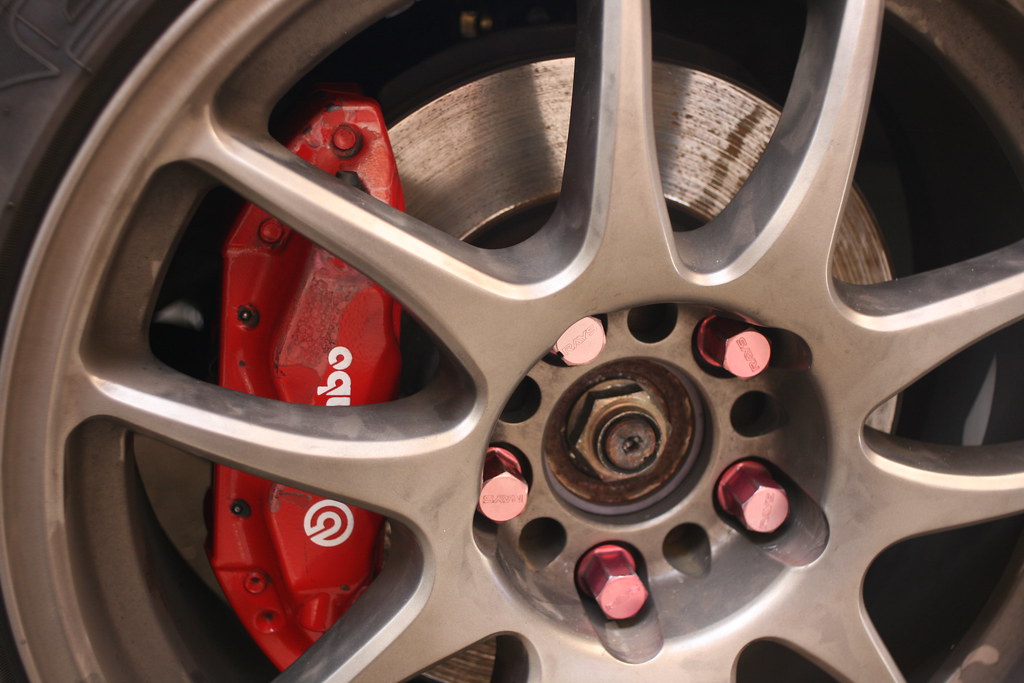
In fourth place is the truly legendary Brembo brand. Originally from Italy, these rims and logo are familiar to all motorsport and fast driving enthusiasts. Due to the specifics, the company specializes in sports models and parts for aggressive driving.
They are distinguished by high build quality and the use of advanced technologies, in particular, a patented system of pads with a high coefficient of friction.
Advantages:
- High reliability;
- Large selection of models.
Disadvantages:
- High price;
- Short service life;
- Sensitive to aggressive environmental conditions.
Fenox
The third line of the rating is occupied by a manufacturer from Belarus. Discs are produced for most Russian models. Popular with buyers due to their low price and ease of installation and maintenance.
The line includes standard and ventilated options.
Advantages:
- Low price.
Disadvantages:
- Low quality workmanship and surface treatment;
- Corroded.
NiBK
Brake pad and disc manufacturer from Japan. The company has deliberately narrowed the range of products, focusing on the production of discs and friction pads.
A distinctive feature of NiBK discs is high manufacturing accuracy and perfect surface finish. Combined with branded pads, this gives confident and consistent braking in all conditions.
The company produces brake discs and related spare parts for leading European, Korean, Japanese and American brands.
Advantages:
- Clean braking without dust on the discs;
- High quality workmanship and reliability;
- Affordable price .;
- Silence.
Disadvantages:
- Not identified.
ATE
The leader of the ranking is a brand from Germany. The history of the company goes back over a hundred years. The company is constantly improving its products and is one of the industry leaders.
ATE offers ventilated brakes, proprietary rotors, perforated discs and composite models that can withstand temperatures up to 800 ° C.
It is recommended to use discs together with original ATE pads.
Advantages:
- Wide range of products;
- High quality workmanship;
- Durability.
Disadvantages:
- High price;
- A large number of fakes on the market.
If you have any experience or tips on using brake pads, share them in the comments.












